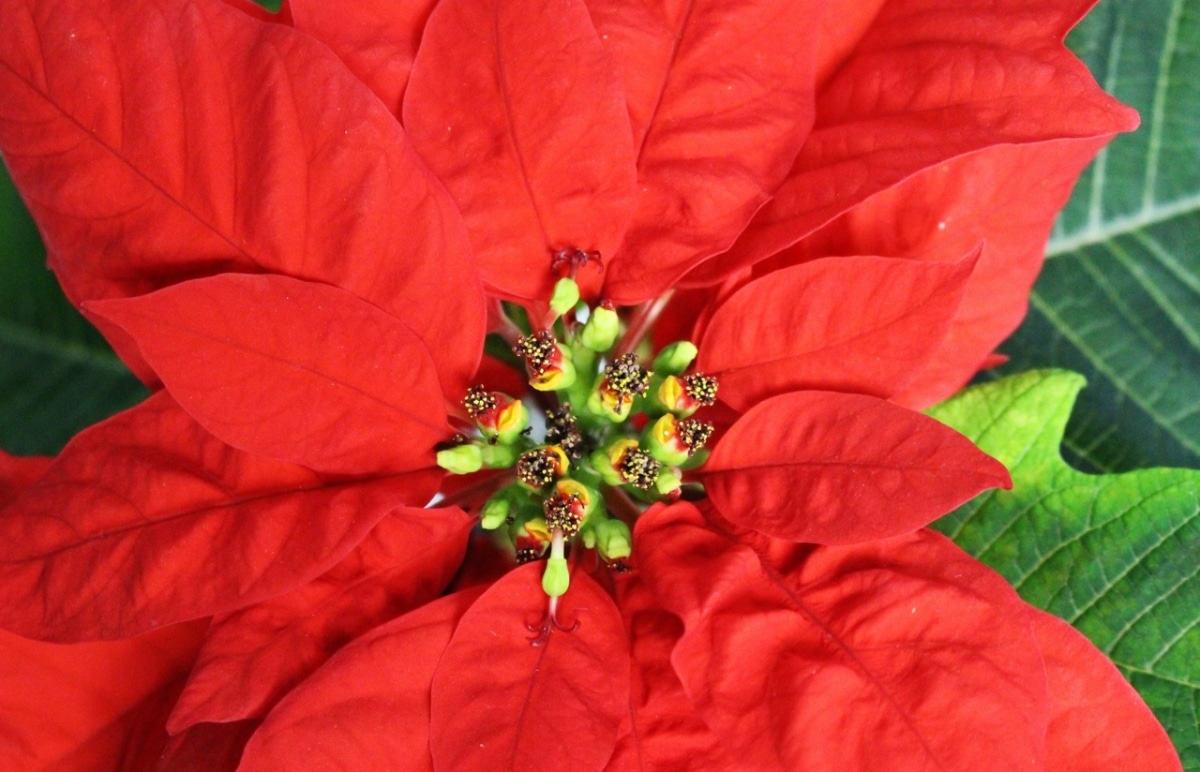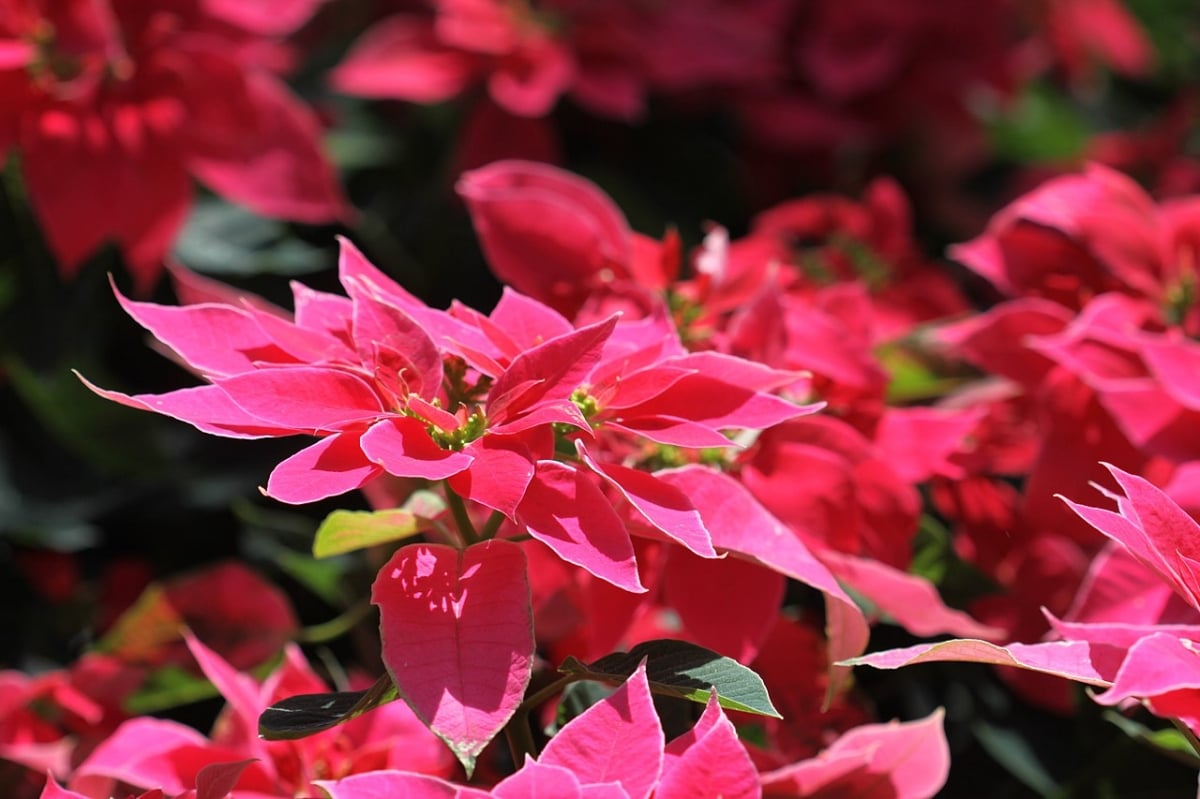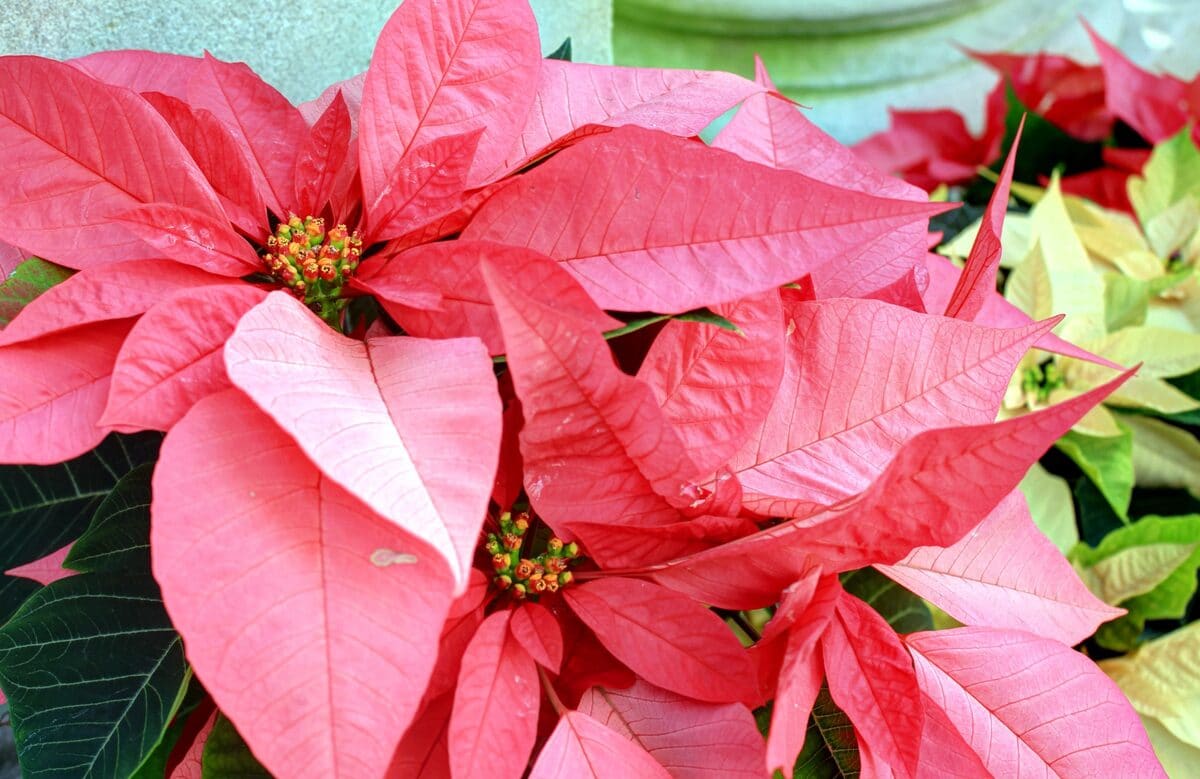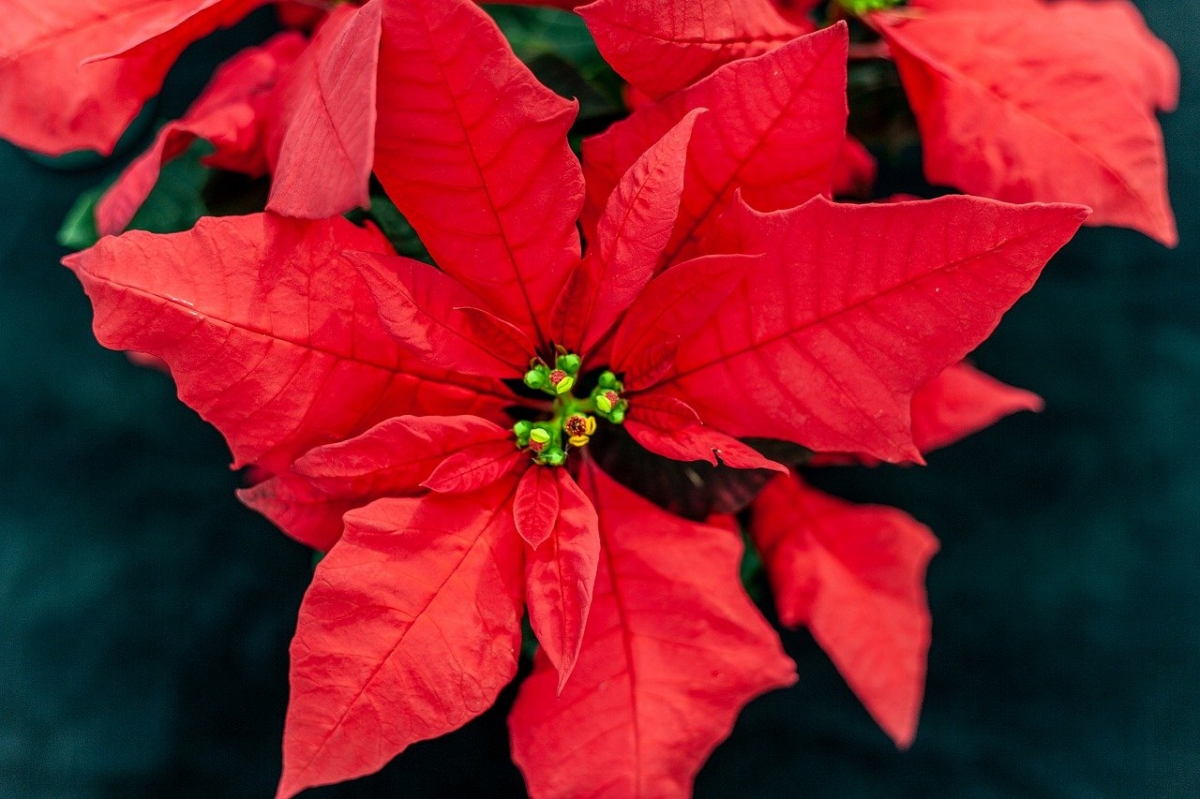
Would you like us to talk about how to redden poinsettia leaves? It is a technique that is not very difficult, and that it is convenient to know regardless of the month in which we are, especially if we intend to cultivate it indoors.
So without further ado, below we will explain in detail how it is done.
How is it done?

Image - Wikimedia / PEAK99
The first thing to know is that what we call leaves they are actually bracts (foliaceous organs) that appear in the upper part of the plant. They serve to attract pollinators, since their true flowers are very small compared to the plant. And when does it bloom? In autumn-winter, between the months of November and February.
Therefore, It is not correct to say that you want to redden the poinsettia leaves, as it is not the leaves that turn red (or whatever color, yellow, pink, or other), if not what happens is that the plant blooms, producing new bracts and florets.
The poinsettia blooms only when the day has more hours of darkness than light. For this reason, can be fooled by manipulating the photoperiod and controlling the temperature (in addition to the environmental conditions).
For that, You will only need to take your Poinsettia - regardless of the color of its bracts - in a shady area, where it does not receive the sun directly, for 12 hours each day until you start to see the bracts appear. The ideal temperature for the flowers to sprout is around 20º Celsius. It is also recommended to fertilize with a fertilizer rich in nitrogen until the flowers begin to sprout.
What else to do to make the Poinsettia bloom?

We have talked about how to get it to bloom, but the truth is that in addition to avoiding direct sunlight or light for a few hours, we also have to provide a series of care. And is that if done wrong, the plant can suffer: its leaves would turn brown and fall, and of course it would not bloom.
Therefore, it is very important to cover your basic needs; In this way we will ensure that it is alive, healthy and that it looks beautiful:
Make sure the substrate has good drainage
Poinsettia does not like excess water, nor does it like very compact and heavy soil. To save you trouble, you have to see if the soil it carries absorbs and filters the water quicklyotherwise the roots could rot.
For that, You just have to pour water into it, without wetting the plant, and calculate the time it takes to come out through the holes in the pot. If it's just a few seconds, perfect, it won't be necessary to transplant it (although it is recommended if it is recently bought, since it has surely rooted well and no longer has more space to grow); but if there are more, then the soil is not the most suitable for it and we will have to plant it in a new pot with a universal cultivation substrate that contains perlite, such as this.
Water sparingly
Both excess and lack of water must be avoided. For this reason, during autumn and winter, as the temperatures are lower and, depending on where we live, the environmental humidity is higher, it is important to let the soil dry out a bit before re-hydrating it; otherwise we would run the risk of fungi appearing, rotting our poinsettia.
So, to know when to water it, what we will do is use a humidity meter. This It is easy to use, since it only has to be inserted into the ground to know how wet or dry it is. Based on what you tell us, we will proceed to water, or we will wait a little longer until it dries.

Fertilize it so it has more energy and flourishes
Since it blooms in the winter months, if we want to have more guarantees that it will produce its red, yellow bracts or whatever color they are, it is highly recommended to fertilize it with a fertilizer for flowering plants, such as this.
Yes, follow the indications specified on the product packaging, since if we exceed the indicated dose we will burn the roots; and if we miss it, it would hardly work.
Protect it from the cold and, if it is indoors, from drafts
The poinsettia is a shrub capable of withstanding the cold once acclimatized, but during the first year that we have it, it is better that it is at home, unless we are lucky enough to live in an area where there is no frost, in which case we could grow it outside.
Likewise, If we have it indoors, it must be taken to a room where there is a lot of light, but it should not be placed near the air conditioning unit or windows that remain open. during the fall-winter. For example, I myself have one in a bright hallway, just below a window that is always closed; in fact, we only open it for a little while to open or close the blind, and it grows well.
If you have unsolved doubts, don't wait any longer and go ahead and comment on them.
Hello, I have had this plant until mid-May when suddenly all the leaves fell off, I transplanted it and soon it sprouted many very vigorous green leaves. And this week it has started to get depressed again and all the leaves have gone down. I think my boyfriend left her exposed to the blast of the air conditioning one afternoon and that's where it all comes from… but I don't know! With how excited I was with this plant that I had revived so soon and so well ... any help to save it again? Thanks a lot.
Hello Eva.
Surely that is the cause of your plant looking a little down. But do not worry. There is still a lot of summer left and it is most likely that it will end up taking out new leaves, even though the bad ones fall.
Water it 2-3 times a week while the heat lasts, protect it from direct light… and strong drafts 🙂.
Thank you. Happy Sunday!
show how to transplant the poinsettia
Hello Teresa.
Pleasure click here to see the step by step.
Greetings and good night! 🙂
hello I love these flowers but I don't know how to take care of them I always have no leaves and they end up leaving them…. I'm a little impatient, I mean, I want the flowers faster and I don't know how to make it grow quickly ……… why can I do it? I want one on my desk
Hello Beatriz.
Caring for plants requires patience, since their pace of life is slower than ours 🙂
En this article we explain how to take care of it.
A greeting.
A branch of the large plant has broken. How can I plant it? And is there something to put to the broken so that the roots grow? Thanks
Hello Francisco.
You can plant it in a pot with substrate for plants, impregnating its base with homemade rooting agents, introducing into the earth the part that was attached to the stem of the poinsettia flower.
Greetings.
Thank you for the information it is concise and clear.
Thanks to you, Rodolfo, for stopping by and commenting 🙂